Inside Putin's Nuclear Briefcase (Cheget) and the Secrets of Russia’s Nuclear Arsenal
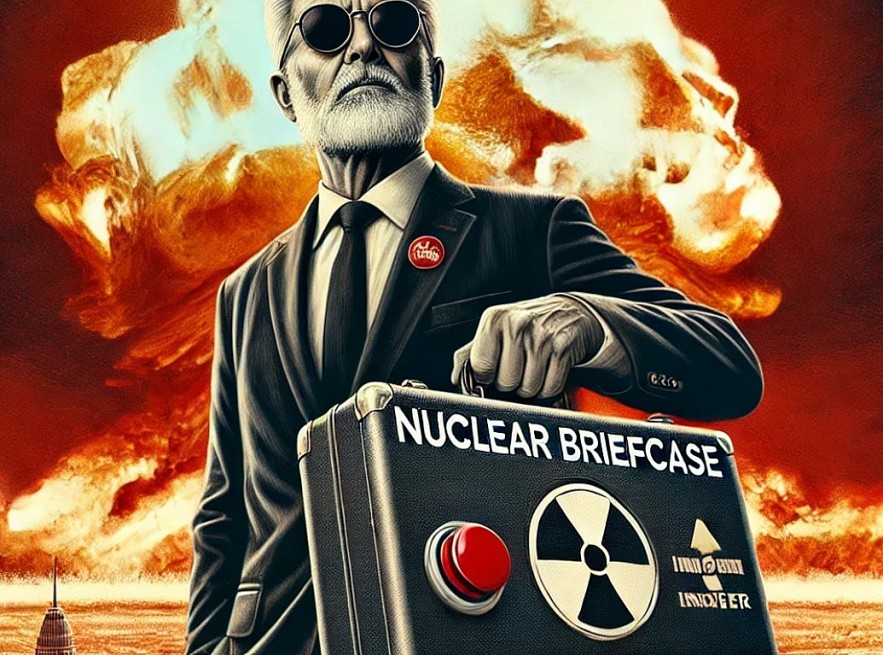 |
| Nuclear Briefcase (Cheget). Image: KnowInsiders |
Shrouded in secrecy and steeped in power, the mysterious "nuclear briefcase" — often seen carried by senior officials near President Vladimir Putin — has become an enduring emblem of Russia’s unmatched military might. Known as the "Cheget" (named after Mount Cheget in the rugged Caucasus Mountains), this device is far more than a symbol; it is the heartbeat of Russia's nuclear command-and-control system, capable of triggering catastrophic consequences in mere moments.
But the Cheget is just one piece of a far larger and more ominous puzzle. Backing it is Russia’s colossal nuclear arsenal—one of the most formidable stockpiles on Earth—that continues to cast a long shadow over global security and geopolitical dynamics.
In this article, KnowInsiders unlock the secrets of Russia’s nuclear briefcase, explore the terrifying reach of its arsenal, and examine the grave implications it holds for international stability.
Learn more: Facts About 'Nuclear Football' Briefcase of the U.S President: History, Inside and Red Button
1. The Nuclear Briefcase (Cheget)
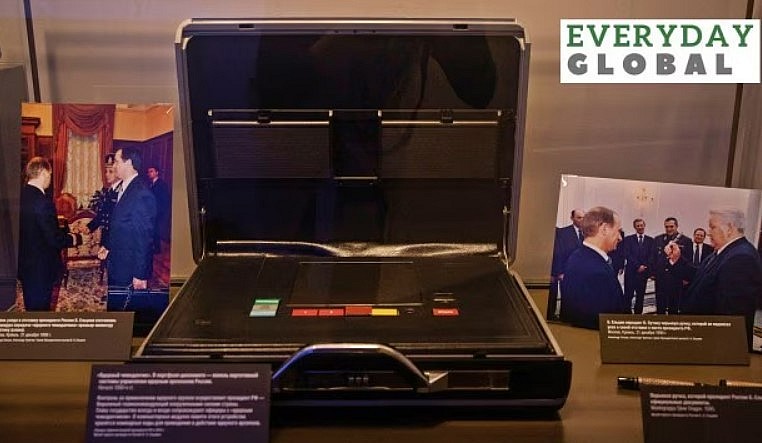 |
| Photographs showing officials, including Russia's incumbent President Vladimir Putin, are on display next to the so-called Russia's nuclear briefcase, also known as the "Cheget", at the exposition of the Boris Yeltsin Presidential Centre in Yekaterinburg, Russia, October 18, 2022. (REUTERS/Natalia Chernokhatova) |
The Cheget, Russia’s nuclear briefcase, serves as a linchpin in the country’s nuclear command-and-control architecture. It is not just a symbol of authority but a sophisticated tool designed to ensure that the nation's nuclear arsenal can be deployed efficiently and securely under the most extreme circumstances.
Origins and Historical Context
The Cheget was conceptualized during the Cold War, a period marked by the arms race between the United States and the Soviet Union. By the early 1980s, Soviet leaders recognized the need for a centralized and secure communication system to manage their growing nuclear arsenal. The Cheget was developed as a response to the American “nuclear football,” with a similar aim of streamlining nuclear decision-making processes.
Under Soviet General Secretary Yuri Andropov, the Cheget became operational in 1983, integrated into the broader nuclear command-and-control system known as “Kazbek.” Its creation underscored the critical importance of rapid and reliable communication in the event of a nuclear escalation, ensuring that orders could be transmitted even under extreme conditions.
Design and Structure
The Cheget is not merely a physical briefcase; it is a comprehensive mobile command unit. Its design prioritizes functionality, security, and survivability in high-stakes scenarios.
-
External Appearance: The Cheget appears as a compact, inconspicuous briefcase, carried by a military officer who remains in close proximity to the President at all times. Its discreet design belies the sophisticated technology housed within.
-
Internal Components: The internal components of the Cheget include:
- Secure Communication Tools: These facilitate direct and encrypted communication with the Kazbek system, connecting the President with the Minister of Defense and the Chief of General Staff.
- Authentication Mechanisms: Multi-layered security protocols ensure that only authorized personnel can access its functions. These include biometric scanners, unique identification codes, and real-time authentication with central command.
- Command Interface: The briefcase includes a terminal that displays critical information about Russia’s nuclear forces, allowing the President to assess the status of the arsenal and issue orders.
Functionality
While often dramatized as a "launch button," the Cheget’s actual purpose is far more complex. It is part of a multi-tiered process that ensures checks and balances before a nuclear strike is authorized.
-
Communication Role: The Cheget acts as a hub, relaying orders and information between the President, military leaders, and nuclear forces. It ensures seamless communication even if standard channels are disrupted during a crisis.
-
Authorization Process: The nuclear launch procedure involves multiple stages:
- Activation: Upon assessing a threat, the President, in coordination with the defense minister and military chiefs, activates the Cheget.
- Authentication: A unique code from the Cheget is used to verify the President’s authority to issue a launch order.
- Kazbek System Integration: The Cheget transmits the verified order to the Kazbek system, which then relays it to the relevant military units, such as the Strategic Missile Forces or submarine commanders.
-
Decentralization Safeguard: The Cheget is designed to function within a framework where the President’s command is indispensable but not unilateral. In the event the President is incapacitated, the defense minister and chief of general staff can jointly authorize action, ensuring continuity of command.
Security and Fail-Safe Mechanisms
The Cheget is engineered with state-of-the-art security systems to prevent unauthorized access or misuse.
-
Encryption and Cybersecurity: The device employs advanced encryption technologies, making it virtually immune to hacking attempts. Continuous updates to its software ensure it remains resilient against evolving cyber threats.
-
Physical Safeguards: The Cheget is always accompanied by a dedicated officer from the Federal Protective Service (FSO), trained to protect the briefcase under all circumstances. In the event of theft or compromise, the Cheget includes mechanisms to render it inoperable remotely.
-
Failsafe Systems: Russia’s nuclear command structure incorporates redundant systems like the “Perimeter” (Dead Hand), which can automatically authorize a retaliatory strike if central command is destroyed. This ensures that no single failure—including the loss of the Cheget—compromises national security.
Symbolism and Public Perception
Beyond its functional role, the Cheget carries profound symbolic significance. It represents the ultimate authority vested in the President as the commander-in-chief. Its presence in public settings, such as high-profile summits or military parades, serves as a reminder of Russia’s status as a nuclear superpower.
However, the Cheget has also been the subject of myths and misconceptions:
- Myth of the "Launch Button": Contrary to popular belief, the Cheget does not directly launch nuclear weapons. It is merely one element of a complex and multi-layered decision-making process.
- Symbol of Fear and Power: The Cheget has become a cultural icon, often dramatized in films and literature as a device capable of instantaneous destruction. This perception underscores the anxieties surrounding nuclear weapons and their potential misuse.
Challenges and Modernization
As warfare evolves, so do the challenges associated with nuclear command-and-control systems like the Cheget.
-
Technological Threats: Advances in cyber warfare have heightened concerns about the vulnerability of even the most secure systems. Ensuring the Cheget’s resilience against such threats is a priority for Russian defense planners.
-
Modernization Efforts: In recent years, the Cheget has likely undergone upgrades to integrate with new technologies, such as artificial intelligence and advanced satellite communications. These enhancements aim to improve decision-making speed and situational awareness during crises.
Russia's Vladimir Putin pictured in China with 'nuclear briefcase'
 |
| Vladimir Putin pictured in China with 'nuclear briefcase' |
On October 18, 2023, Russian President Vladimir Putin was captured on camera in China with officers carrying the alleged nuclear briefcase. According to the footage, which was made public by Chinese state media, Putin was escorted by two uniformed Russian naval officers, each carrying a briefcase, as he made his way to a meeting with Chinese President Xi Jinping.
 |
| Putin filmed in China accompanied by officers with Russian nuclear briefcase |
One of the briefcases, thought to be the nuclear briefcase, was the subject of the camera's close-up.
The codes and other documents required for the Russian president to approve a nuclear strike are kept in a specially designed briefcase known as the "nuclear briefcase." Even when he travels overseas, the president is always with it.
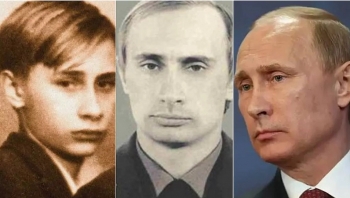 President Putin: Life Horoscope, Zodiac Sign, and Astrological Predictions President Putin: Life Horoscope, Zodiac Sign, and Astrological Predictions |
2. Russia’s Current Nuclear Arsenal: Scope and Composition
Russia’s nuclear arsenal is one of the most formidable in the world, both in scale and technological sophistication. It serves as the backbone of Russia's national security, embodying its strategy of deterrence and power projection. Below is a detailed examination of the composition and destructive capabilities of Russia's nuclear forces.
2.1 Total Warheads and Strategic Overview
As of 2024, Russia possesses approximately 5,889 nuclear warheads, which include:
- Deployed Warheads: Around 1,674 operational warheads mounted on intercontinental ballistic missiles (ICBMs), submarine-launched ballistic missiles (SLBMs), and strategic bombers.
- Reserve Warheads: Thousands of additional warheads are in reserve or slated for dismantlement.
This vast inventory makes Russia the largest nuclear power in terms of total warheads, surpassing even the United States. While not all warheads are immediately deployable, the sheer volume ensures that Russia retains a significant second-strike capability in the event of a nuclear exchange.
2.2 Delivery Systems: The Nuclear Triad
Russia’s delivery systems form a triad of land, sea, and air-based platforms, ensuring the survivability and versatility of its nuclear arsenal.
-
Land-Based Systems
-
Russia's ICBMs are the cornerstone of its strategic forces, housed in silos or mounted on mobile platforms for enhanced survivability.
-
Key systems include:
- RS-24 Yars: A solid-fueled ICBM capable of carrying multiple independently targetable reentry vehicles (MIRVs), with a total yield exceeding 1 megaton per missile.
- RS-28 Sarmat ("Satan II"): Known for its unprecedented destructive power, this liquid-fueled ICBM can carry up to 10-15 MIRVs, each with a yield of 750 kilotons to 1 megaton, capable of destroying entire cities or hardened military installations.
- Topol-M: A mobile ICBM with a single warhead of 800 kilotons, designed for rapid deployment and survivability against preemptive strikes.
-
Destructive Capability: A single RS-28 Sarmat missile has the potential to annihilate areas the size of France or Texas, demonstrating the apocalyptic scale of Russia’s land-based arsenal.
-
-
Sea-Based Systems
-
Russia’s nuclear-powered submarines provide a robust second-strike capability, designed to remain undetected beneath the ocean's surface.
-
Key components:
- Borei-Class Submarines: Armed with Bulava SLBMs, each capable of carrying 6-10 MIRVs, with a total yield of up to 150 kilotons per warhead.
- Delta IV-Class Submarines: Equipped with R-29RM Sineva missiles, capable of carrying 4-10 MIRVs, with yields ranging from 100 kilotons to 475 kilotons.
-
Strategic Advantages: Submarines like the Borei-class are virtually undetectable, providing Russia with a secure retaliatory strike option. Their mobility ensures that they can launch attacks from anywhere in the world.
-
Poseidon Autonomous Torpedoes: A groundbreaking addition to Russia's arsenal, Poseidon is an underwater drone armed with a 2-megaton warhead, designed to create radioactive tsunamis capable of wiping out coastal cities.
-
-
Air-Based Systems
-
Russia’s strategic bombers serve as a flexible delivery platform, capable of carrying both gravity bombs and cruise missiles.
-
Key aircraft:
- Tu-160 "Blackjack": The world’s largest supersonic bomber, capable of carrying nuclear payloads equivalent to 2-3 megatons.
- Tu-95MS "Bear": A long-range bomber armed with Kh-102 nuclear cruise missiles, each with a yield of 250 kilotons.
-
Destructive Capability: These bombers, armed with multiple cruise missiles, can devastate vast territories with precision strikes, targeting military infrastructure or population centers.
-
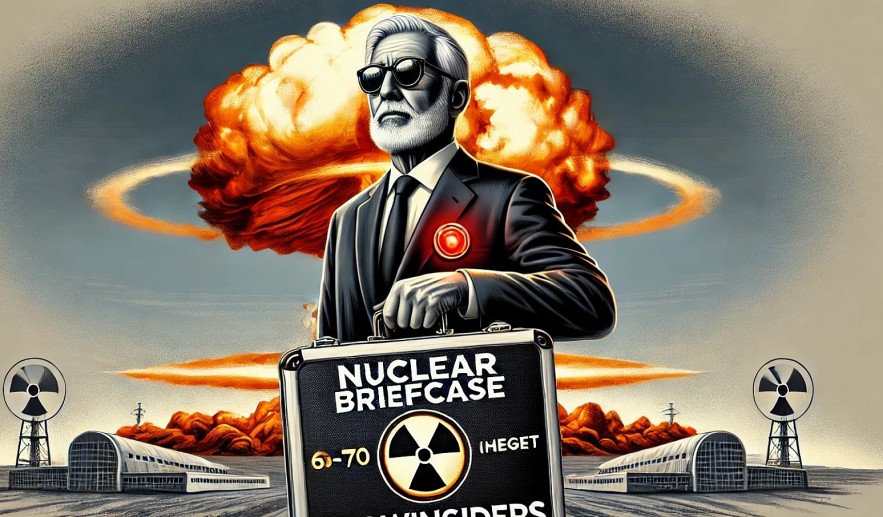 |
| The Cheget was conceptualized during the Cold War |
2.3 Tactical Nuclear Weapons
In addition to strategic warheads, Russia maintains a formidable stockpile of 2,000 tactical nuclear weapons, designed for use on the battlefield or in regional conflicts. These weapons can be deployed on various platforms, including:
-
Iskander-M Short-Range Ballistic Missiles (SRBMs): Capable of carrying warheads with yields of up to 50 kilotons, ideal for precision strikes against military targets.
-
Kalibr Cruise Missiles: Versatile weapons that can deliver nuclear payloads over a range of 1,500–2,500 km.
-
Kinzhal Hypersonic Missiles: Capable of traveling at speeds exceeding Mach 10, with nuclear warheads of 100–500 kilotons.
-
Destructive Impact: Tactical nuclear weapons are designed to cause localized destruction but retain immense power. A 50-kiloton weapon, for instance, can destroy an area several kilometers in radius, with catastrophic fallout extending even further.
2.4 Destructive Potential of Russia’s Arsenal
The destructive power of Russia’s nuclear arsenal cannot be overstated. A single RS-28 Sarmat, carrying up to 15 warheads, could obliterate multiple cities in a single launch. Similarly:
- A Poseidon torpedo, detonated underwater, could render vast coastal areas uninhabitable for decades due to radioactive contamination.
- A strategic bomber strike, employing dozens of cruise missiles, could paralyze an entire nation’s infrastructure.
To provide perspective:
- The Hiroshima bomb in 1945 had a yield of 15 kilotons. By comparison, most of Russia's strategic warheads range between 100 kilotons and 1 megaton, with some exceeding 2 megatons.
- A single ICBM MIRV strike could release energy equivalent to thousands of Hiroshima bombs, effectively annihilating entire regions.
2.5 Modernization and Advanced Technologies
Russia has heavily invested in modernizing its nuclear forces, incorporating cutting-edge technologies to maintain its strategic edge:
- Hypersonic Glide Vehicles: Systems like Avangard, capable of maneuvering at hypersonic speeds, make interception nearly impossible.
- Autonomous Weapons: The Poseidon and Burevestnik (Skyfall) nuclear-powered cruise missiles offer unprecedented operational flexibility, capable of evading missile defenses.
- Cybersecurity: Upgrades to command-and-control systems ensure resilience against cyber threats, preserving the integrity of Russia’s nuclear deterrent.
3. Russia’s New Nuclear Doctrine (2024)
In November 2024, President Vladimir Putin approved a new nuclear doctrine in response to the United States and Europe allowing Ukraine to deploy long-range weapons capable of striking deep into Russian territory. This new doctrine lowers the threshold for nuclear weapon use, broadening the scenarios under which Russia might initiate a nuclear response.
-
Key Changes in the Doctrine
- Response to Conventional Threats: The doctrine explicitly permits the use of nuclear weapons in response to conventional attacks that threaten Russia's sovereignty or territorial integrity. This shift is designed to deter NATO and other Western nations from directly supporting Ukrainian offensives.
- Pre-Emptive Strikes: Under the revised policy, pre-emptive use of tactical nuclear weapons is considered a viable option if Russia perceives an imminent existential threat.
- Integration of Hypersonic and Tactical Capabilities: Russia's focus has expanded to integrate advanced weapons such as hypersonic missiles and autonomous delivery systems into its nuclear strategy.
-
Geopolitical Context This doctrinal shift reflects Moscow's heightened concerns about Western military support to Ukraine, particularly the provision of long-range missile systems capable of targeting critical Russian infrastructure. By recalibrating its nuclear posture, Russia aims to assert its deterrence credibility amid escalating regional tensions.
Conclusion
The Cheget and Russia’s nuclear arsenal symbolize the immense power and responsibility tied to nuclear decision-making. The recent changes in Russia’s nuclear doctrine signal a more assertive and defensive posture in the face of Western support to Ukraine. As geopolitical tensions rise, understanding these systems and doctrines is critical for fostering informed discussions on global security and arms control. The continued evolution of nuclear policies will shape the future stability of the international order.
FAQs
-
Who has the authority to press the nuclear button in Russia?
Only the President of Russia has the ultimate authority to order the use of nuclear weapons. The decision-making process involves the use of the nuclear briefcase (Cheget), but it is not a simple "push-button" mechanism. It requires multi-layered verification and coordination with military leaders.
-
Which individuals and agencies in Russia are involved in authorizing a nuclear strike?
The chain of command includes the President, the Minister of Defense, and the Chief of the General Staff. The decision to use nuclear weapons must be transmitted through the nuclear command-and-control system, with strict authentication protocols.
-
What role does the Cheget play in a nuclear launch?
The Cheget acts as a secure communication device rather than a direct launch mechanism. It allows the President to communicate with military command structures and transmit verified orders to the Strategic Missile Forces or other relevant units.
-
What is the "Kazbek" system, and how is it connected to the Cheget?
The Kazbek system is Russia's centralized nuclear command-and-control system. The Cheget is a portable component of this system, enabling the President to issue orders remotely. Kazbek ensures all communications are secure and properly authenticated.
-
Can a nuclear strike be launched without the President's authorization?
No, Russia's nuclear launch procedures are designed to prevent unauthorized actions. If the President is incapacitated, the chain of command allows for decisions to be made jointly by the Minister of Defense and the Chief of the General Staff.
-
What safeguards are in place to prevent accidental launches?
Russia's nuclear command-and-control systems incorporate multiple layers of encryption, authentication, and human oversight. Fail-safe mechanisms, such as the requirement for multiple verifications, ensure that accidental or unauthorized launches are nearly impossible.
-
What is the role of the "Perimeter" or "Dead Hand" system?
The Perimeter system is an automated nuclear retaliatory mechanism. It ensures a second-strike capability by automatically launching nuclear weapons if command-and-control systems are destroyed, and it detects specific conditions indicating a catastrophic attack on Russia.
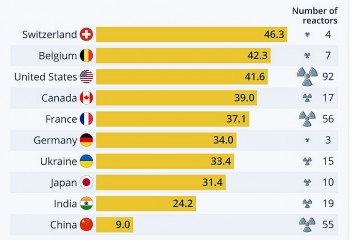 Top 10 Countries Have the Most Nuclear Reactors in the World Top 10 Countries Have the Most Nuclear Reactors in the World On a global scale, 411 reactors were in operation. The question then becomes, which country has more nuclear reactors and is thus considered a nuclear ... |
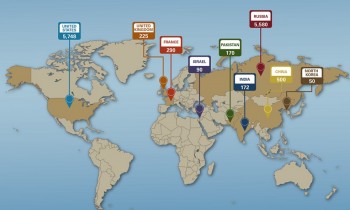 How Many Countries Are Armed with Nuclear Weapons in 2024/2025? How Many Countries Are Armed with Nuclear Weapons in 2024/2025? After Ukraine eliminated this kind of devastating weapon, nine nations made their nuclear weapons publicly known by the end of 2024 or the beginning of ... |
 Does Ukraine Have Nuclear Weapon? Does Ukraine Have Nuclear Weapon? The global community is inquiring as to whether Ukraine possesses nuclear weapons. It was previously a nuclear power; however, it does not possess nuclear weapons ... |
























